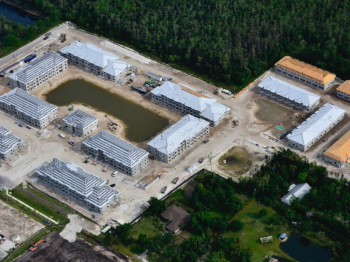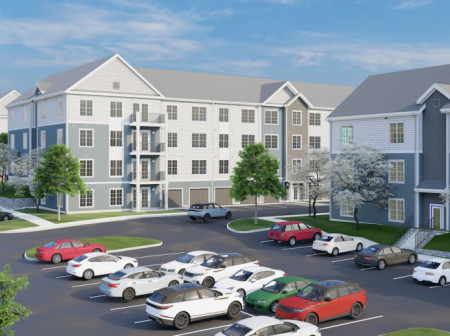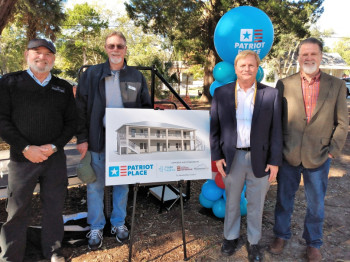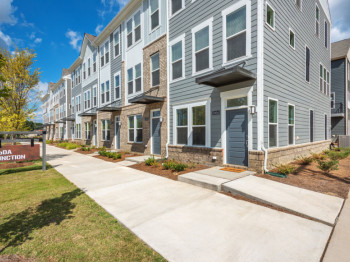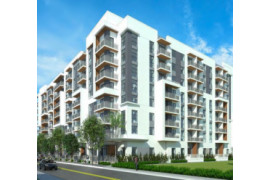Trending Multifamily News
The National Multifamily Housing Council (NMHC)’s Rent Payment Tracker found 79.3 percent of apartment households made a full or partial rent payment by August 6 in its survey of 11.4 million units of professionally managed apartment units across the country.
This is a 1.9-percentage point, or 223,000-household decrease from the share who paid rent through August 6, 2019 and compares to 77.4 percent that had paid by July 6, 2020. These data encompass a wide variety of market-rate rental properties across the United States, which can vary by size, type and average rental price.
“Over the past few months apartment residents have largely been able to meet their housing obligations. In no small part, this is due to the enhanced unemployment benefits enacted under the CARES Act and significant steps by apartment owners and operators to help their residents. These unemployment benefits that have proven so important to so many households have now lapsed, meaning greater financial distress for millions and the potential worsening of America’s housing affordability crisis,” said David Schwartz, NMHC Chair, and CEO and Chairman of Chicago-based Waterton.
“While President Trump announced executive orders relating to rental assistance and continued unemployment benefits, it is unclear when and if those resources will be available to families. NMHC continues to urge the Trump administration and Congressional leaders to restart negotiations and reach a comprehensive agreement on the next COVID relief package. It is critical lawmakers take urgent action to support and protect apartment residents and property owners through an extension of the benefits as well as targeted rental assistance. That support, not a broad-based eviction moratorium, will keep families safely and securely housed as the nation continues to recover from the pandemic.”
The NMHC Rent Payment Tracker metric provides insight into changes in resident rent payment behavior over the course of each month, and, as the dataset ages, between months. While the tracker is intended to serve as an indicator of resident financial challenges, it is also intended to track the recovery as well, including the effectiveness of government stimulus and subsidies.
However, noteworthy technical issues may make historical comparisons imprecise. For example, factors such as varying days of the week on which data are collected; individual companies’ differing payment collection policies; shelter-in-place orders’ effects on residents’ ability to deliver payments in person or by mail; the closure of leasing offices, which may delay operators’ payment processing; and other factors can affect how and when rent data is processed and recorded.
NMHC is proud to partner with the following firms on this initiative:
|
The National Multifamily Housing Council (NMHC) and the National Apartment Association (NAA) applaud the Trump administration’s signing of an Executive Order directing agencies to use emergency authorities to identify regulations that can be rescinded or temporarily waived to encourage economic growth and recovery from the effects of COVID-19. Time and again, regulations have proven detrimental to housing affordability and efforts to address our nation’s housing supply shortage.
Prior to the onset of the COVID-19 pandemic, our nation was already facing a housing affordability crisis brought on by a housing supply shortage and insufficient infrastructure. Rising costs and regulatory burdens at all levels of government depress apartment development and rehabilitation nationwide. The NAA Barriers to Construction Index cites numerous regulations, including those dictating land usage and environmental considerations, as key factors harming apartment construction. And, research by NMHC and the National Association of Home Builders (NAHB) found that regulations imposed by all levels of government account for an average of 32.1 percent of multifamily development costs. Easing burdensome regulations will encourage apartment construction, which ultimately helps housing affordability.
Lawmakers should also enact policies to expand and diversify the creation and renovation of housing throughout the country. Doing so now ensures the housing affordability crisis the country was already grappling with before COVID-19 is not made worse by the pandemic. Moreover, robust housing development and rehabilitation can help drive the nation’s economic recovery – apartment construction contributes $150.1 billion to the national economy annually and creates 752,000 jobs, while renovation contributes an additional $69 billion and creates 340,000 jobs.
NMHC and NAA support the Administration’s efforts to reform the regulatory apparatus and spur economic growth and job creation. Prior to the introduction of this EO, NMHC and NAA had been in regular communication with Administration officials regarding reducing regulation – including taking part in a November 2019 roundtable at the White House Council on Eliminating Regulatory Barriers to Affordable Housing.
NMHC and NAA look forward to continuing to work with the Trump Administration on this important measure that will help spur economic growth and job creation.
More resources on COVID-19 from NMHC and NAA can be found here and here.
|
|
Payment level represents a payment rate of 98.1 percent compared to May 1-6, 2019 |
|
The NMHC Rent Payment Tracker is powered by Entrata, MRI Software, RealPage, ResMan and Yardi |
|
The National Multifamily Housing Council (NMHC)’s Rent Payment Tracker found 80.2 percent of apartment households made a full or partial rent payment by May 6 in its survey of 11.4 million units of professionally managed apartment units across the country.
This is a 1.5-percentage point decrease in the share who paid rent through May 6, 2019 and
“Despite the fact that over twenty million people lost their jobs in April, for the second month in a row, we are seeing evidence that apartment renters who can pay rent are stepping up and doing so,” said Doug Bibby, NMHC President. “We expect May to largely mirror April, when the payment rate increased throughout the month as financial assistance worked its way to people’s bank accounts.”
“However, we are in uncharted waters and will be watching this closely over the course of the month as millions of households will not be able to access unemployment benefits, and those who have may find that they are not enough to cover rent plus all the other financial pressures caused by this crisis,” said Bibby. “Those benefits will also likely fall short in high-cost areas. That’s why we are calling on Congress to include $100 billion in direct renter assistance in the next pandemic relief package.”
“When millions of renters found themselves sheltering in place at their apartment home, apartment firms made it a priority to help them retain their housing,” said David Schwartz, NMHC Chair, and CEO and Chairman of Chicago-based Waterton. “NMHC called on apartment firms to halt evictions for residents impacted by COVID-19, waive late fees and create payment plans for them and also avoid rent increases for 90 days to help residents weather the crisis. Many took up that call, and others went even further to help their residents. However, we can’t do it alone. We need Congress to help.”
“The cascading effect of any rent gap is meaningful,” said Bibby. “Apartment owners have $1.6 trillion in outstanding mortgage debt. If they can’t cover their debt, we might see a wave of multifamily foreclosures that could rival the single-family foreclosures that occurred during the Great Recession. In addition, apartment owners pay $58 billion in property taxes that help support essential services such as schools, emergency services and other important local needs.”
This survey is one of a number of NMHC-produced resources focused on the COVID-19 outbreak.
Additional resources, data and materials can be found here. |
